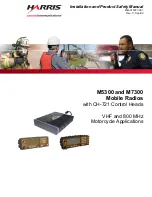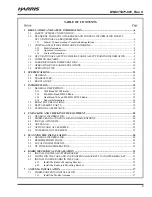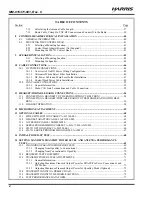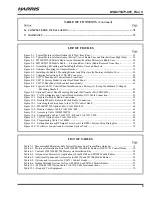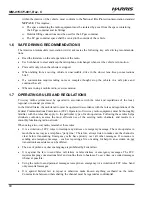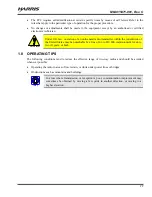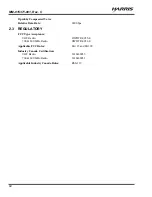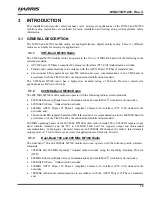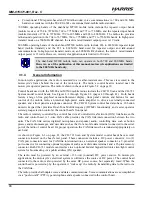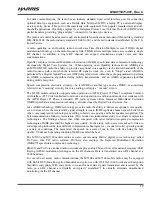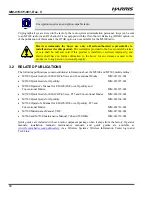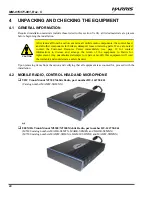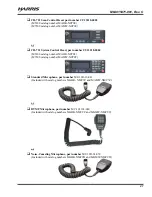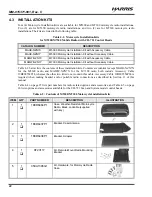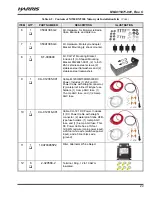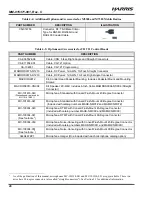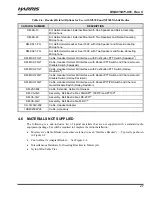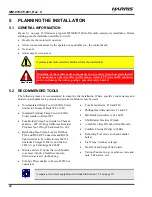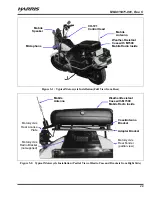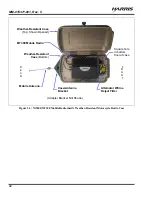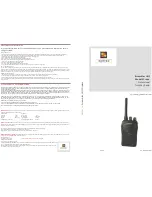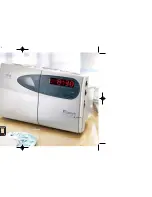
MM-015371-001, Rev. C
15
3
INTRODUCTION
This installation and product safety manual covers motorcycle applications of the M5300 and M7300
mobile radios. Instructions are included for radio installation and testing, along with applicable safety
information.
3.1 GENERAL DESCRIPTION
The M5300 and M7300 mobile radios are high-performance digital mobile radios. Three (3) different
radios are available for motorcycle applications:
3.1.1
VHF-Band M7300 Radio
The VHF-band M7300 mobile radio can operate in the 136 to 174 MHz RF band with the following radio
systems/standards:
APCO Project 25 Phase I compliant Common Air Interface (P25 CAI) trunked radio networks;
Talk-around communications in accordance with the APCO Project 25 Phase I standard; and,
Conventional FM repeater-based and FM talk-around voice communications in the VHF-band in
accordance with the TIA/EIA-603 conventional land-mobile radio standard.
The VHF-band M7300 radio has a high-power transmit rating of 50 watts. However, motorcycle
applications are limited to 20 watts.
3.1.2
800 MHz-Band M5300 Radio
The 800 MHz M5300 mobile radio can operate with the following radio systems/standards:
800 MHz Enhanced Digital Access Communications System (EDACS
®
) trunked radio networks;
800 MHz ProVoice
™
trunked radio networks;
800 MHz APCO Project 25 Phase I compliant Common Air Interface (P25 CAI) trunked radio
networks; and,
Conventional FM repeater-based and FM talk-around voice communications in the 800 MHz band in
accordance with the TIA/EIA-603 conventional land-mobile radio standard.
800 MHz operating bands of the 800 MHz M5300 mobile radio include 806 to 824 MHz repeater input
band (mobile transmit) and the 851 to 869 MHz band used for repeater output and talk-around
communications. In high-power transmit mode on an 800 MHz RF channel, the radio’s rated transmit
output power is 35 watts. However, motorcycle applications are limited to 20 watts.
3.1.3
Dual-Band 700 and 800 MHz M7300 Radio
The dual-band 700 and 800 MHz M7300 mobile radio can operate with the following radio systems/-
standards:
700 MHz and 800 MHz OpenSky
®
trunked radio networks using the OpenSky Trunking Protocol
(OTP);
800 MHz Enhanced Digital Access Communications System (EDACS
®
) trunked radio networks;
800 MHz ProVoice
™
trunked radio networks;
800 MHz APCO Project 25 Phase I compliant Common Air Interface (P25 CAI) trunked radio
networks;
700 MHz talk-around communications in accordance with the APCO Project 25 Phase I standard;
and,

